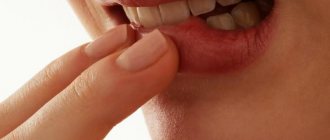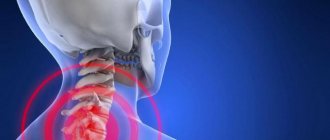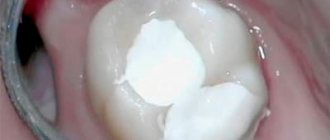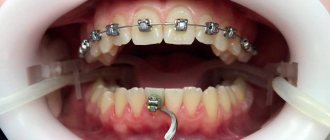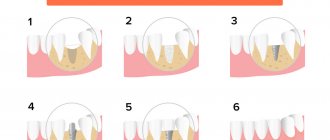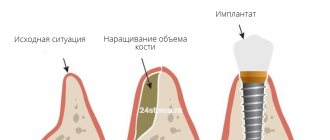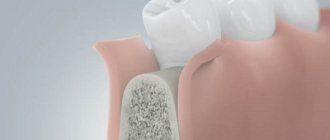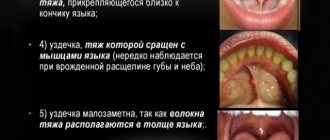Naturally occurring mineral form of calcium apatite
| Hydroxyapatite | |
| Hydroxyapatite crystals on a matrix | |
| General | |
| Category | Phosphate mineral apatite group |
| Formula (repeating unit) | Ca5(PO4)3(OH) |
| Strunz classification | 8.BN.05 |
| Crystal system | Hexagonal |
| Crystal class | Dipyramidal (6/m) HM Symbol (6/m) |
| Space group | P 6 3/m |
| Cell | a = 9.41 Å, c = 6.88 Å; Z=2 |
| Identification | |
| Mass formula | 502.31 g/mol |
| Color | Colorless, white, gray, yellow, yellowish green |
| Crystal Habit | In the form of lamellar crystals and stalagmites, concretions, from crystalline to massive crusts. |
| Split | Bad on {0001} and {10 1 0} |
| Fracture | Conchoidal |
| Perseverance | Fragile |
| Mohs hardness | 5 |
| Shine | Glassy to semi-resinous, earthy |
| Band | white |
| Transparency | Transparent to translucent |
| Specific gravity | 3.14–3.21 (measured), 3.16 (calculated) |
| Optical properties | Single axis (-) |
| Refractive index | n ω = 1.651 n ε = 1.644 |
| Birefringence | δ = 0.007 |
| Recommendations | [1] [2] [3] |
Hydroxyapatite Needle-shaped crystals of hydroxyapatite on stainless steel.
Scanning electron microscope image from the University of Tartu. Nanoscale Ca-HAp coating, image obtained with a scanning probe microscope. 3D rendering of half a hydroxyapatite unit cell from X-ray crystallography. Hydroxyapatite
, also called
hydroxyapatite
(
HA
), is a natural mineral form of calcium apatite with the formula Ca 5 (PO 4 ) 3 (OH), but is usually written Ca 10 (PO 4 ) 6 (OH) 2 to indicate that the unit cell of the crystal consists of in two parts. [4] Hydroxyapatite is the terminal hydroxyl element of the apatite complex group. The OH ion can be replaced by fluoride, chloride, or carbonate to form fluorapatite or chlorapatite. It crystallizes in the hexagonal crystal system. Pure hydroxyapatite powder is white in color. However, naturally occurring apatites can also be brown, yellow, or green in color, comparable to the discoloration seen in dental fluorosis.
Up to 50% by volume and 70% by mass of human bone is a modified form of hydroxyapatite, known as bone mineral. [5] Calcium-deficient carbonated hydroxyapatite is the primary mineral that makes up tooth enamel and dentin. Hydroxyapatite crystals also occur in small calcifications in the pineal gland and other structures known as corpora or "brain sand." [6]
Calcium-deficient hydroxyapatite[edit]
Calcium-deficient (non-stoichiometric) hydroxyapatite, Ca 10− x
(PO 4 ) 6−
x
(HPO 4 )
x
(OH) 2−
x
(where
x
is between 0 and 1), has a Ca/P ratio of 1.67 to 1.5.
The Ca/P ratio is often used when discussing calcium phosphate phases. [9] Stoichiometric apatite Ca10(PO4)6(OH)2 has a Ca/P ratio of 10:6, usually expressed as 1.67. Non-stoichiometric phases have a hydroxyapatite structure with cation vacancies (Ca 2+ ) and anion (OH - ) vacancies. The sites occupied exclusively by phosphate anions in stoichiometric hydroxyapatite are occupied by phosphate or hydrophosphate anions HPO 4 2-. [9] The preparation of these calcium-deficient phases can be obtained by precipitation from a mixture of calcium nitrate and diammonium phosphate with the desired Ca/P ratio, for example to obtain a sample with a Ca/P ratio of 1.6:[10] 9.6 Ca(NO 3 ) 2 + 6 (NH 4 ) 2 HPO 4 → Ca 9.6 (PO 4 ) 5.6 (HPO 4 ) 0.4 (OH) 1.6
Sintering of these non-stoichiometric phases leads to the formation of a solid phase, which is a homogeneous mixture of tricalcium phosphate and hydroxyapatite, called biphasic calcium phosphate: [11]
Ca 10−
x
(PO 4 ) 6−
x
(HPO 4 )
x
(OH) 2−
x
→ (1 -
x
) Ca 10 (PO 4 ) 6 (OH) 2 + 3
x
Ca 3 (PO 4 ) 2
The development of dentistry at the present stage is marked by considerable successes, which are associated with the introduction of theoretical and experimental achievements of related sciences, including materials science, into medical science and practice.
It is known what an important role autogenous bone transplantation has played in recent years, but today new materials, in particular ceramic ones based on hydroxyapatite (HAP) and tricalcium phosphate (TCP), are coming to the fore.
The first report on the use of bioactive ceramics based on HAP as an osteogenesis stimulator appeared in 1920. Research on these materials intensified in the 1960s.
In 1963, the work of L. Smith et al presented an analysis of the study of implants made of various types of ceramics as bone substitutes.
Now these developments have received a new qualitative turn, which has made it possible to expand the understanding of the effect of bioactive ceramics on surrounding tissues and to formulate possible aspects of use in medicine, including dentistry.
Calcium phosphate ceramics are widely used as bone substances due to the fact that they have an elemental composition similar to bone. Among them, the most common are ceramics with a Ca to P ratio from 1.5 to 1.67, which corresponds to the elemental composition of the above TCP and HAP.
From the well-known arsenal of ceramic materials (corundum ceramics, enamel, calcium phosphate ceramics, etc.), calcium phosphate ceramics are tested in dentistry.
Aspects of the use of hydroxyapatite and tricalcium phosphate:
- Replacing dental defects
- Surgical treatment of periodontitis
- Closure of bone defects after cystectomy
- Stimulation of osteogenesis in traumatic injury of the lower jaw
- Reconstruction of atrophied alveolar ridge.
In the latter case, the use of implants with HAP provides a significant advantage over other methods, allowing the height of the alveolar ridge to be maintained for a long time.
HAP in medicine and, including dentistry, is used in the form of monolithic and porous samples, granules of various sizes, and as a coating on metal implants.
It has been proven that the properties of hydroxyapatite depend on the synthesis conditions, primarily on the production temperature. HAP, synthesized at room temperature, is characterized by high sorption properties and resorption.
High-temperature ceramic material is resistant to biological environmental factors. Various additives, such as ions of various metals, have a great influence on the properties of ceramic materials.
TCP ceramics in their pure form are still practically used only in experimental studies. There are a few known clinical developments where tricalcium phosphate is used as an addition to hydroxyapatite ceramics.
Existing literature reviews highlight certain aspects of the use of ceramic materials in dentistry. However, there is no theoretical basis that would allow, based on the discovery of the biological effects of bioceramics on bone, to substantiate the directions for the clinical use of ceramic materials in dentistry.
The purpose of today's article is to review data on the problem of bone keramoplasty and the mechanisms of biological interaction between ceramic implants and bone tissue.
Application of hydroxyapatite in dentistry
The first problem that researchers and physicians encounter when using HAP in research or treatment is the wide variety of materials that come under the umbrella term “hydroxyapatite.”
Using diffractometry and electron microscopy, it was shown that HA has different physicochemical characteristics of phase states depending on the synthesis conditions.
When carried out at room temperature, synthetic HAp is characterized by low crystallinity. It has high sorption properties and is easily absorbed in biological media.
Using such forms of HAP, the surgeon has the opportunity to quickly achieve healing of bone defects based on stimulation of the reparative potential of bone tissue.
In this case, gradual biodegradation of hydroxyapatite occurs and its replacement by newly formed bone. This is facilitated by the saturation of the medium with calcium and phosphorus, which are released during the resorption of HAP.
The process of implant reconstruction with the formation of bone tissue occurs especially quickly when ceramic materials and biologically active substances are used together.
HAP in condensation-crystallization form (low-temperature dense ceramics) is chemically stable, practically insoluble in water and has extremely low solubility in biological media.
The density of blocks of this type of HAP ceramics can be increased to almost the maximum (theoretically calculated) compact ceramic density value of 3.16 g/cm, which is very important for long-term loads.
Material with such properties is used for the manufacture of endoprostheses when replacing bone damage of considerable length, in dental prosthetics, while achieving not only restoration of the shape, but also the functional ability of the bone organ.
Powdered HAp, depending on the synthesis procedure, can be amorphous, polycrystalline, or with a low degree of crystallinity.
Finely dispersed hydroxyapatite is chemically inert and has low solubility in water, as well as high sorption activity.
The structural organization of ceramic crystals affects the process of restructuring in bone tissue. In this regard, to understand the biological activity of a ceramic material, it is necessary to know its chemical composition and crystal structure.
X-ray diffraction analysis demonstrates that most commercial hydroxyapatite preparations are not pure substances.
HAP is a structural analogue of the mineral component of bone tissue and has a unique biological affinity when implanted into bone tissue. It is characterized by the absence of connective tissue that usually forms around a foreign body (metal or plastic implant).
The process of osteogenesis occurs directly on the surface of the ceramic material and is assessed as the osteotropic property of bioactive hydroxyapatite.
The literature provides tissue, cellular, and subcellular evidence for interactions between bone and hydroxyapatite. It has been established that osteoblasts in tissue culture are tightly attached to the surface of HAP due to the formation of focal contacts of the plasma membrane.
At the same time, they retain biosynthetic activity, producing components of the organic matrix - glycosaminoglycans, collagen, osteopontin and others.
The formation of collagen fibers is observed on the surface of HAP. Their mineralization occurs due to the precipitation of HAP crystals, ion exchange and due to matrix vesicles.
Electron microscopy demonstrated direct contact between bone tissue hydroxyapatite crystals and implant HAP crystals.
The literature discusses two mechanisms of bone tissue formation under conditions of hydroxyapatite implantation. The first is based on observations that confirm that the source of regeneration is cambial cells of the endosteum, bone marrow or others.
Experiments on animals have confirmed that bone cells form components of the intercellular matrix, including the mineral component (HAP), directly from the implant material due to chemical reactions.
This provides bioactive ceramics with the ability to biodegrade. This property allows us to consider HAP as a “calcium depot” during bone tissue remodeling.
Another, alternative, mechanism of reparative regeneration of bone tissue around hydroxyapatite ceramics suggests that HAP crystals act as a “trap” for biologically active substances, in particular, morphogenetic protein, the importance of which in stimulating osteogenesis has been scientifically proven.
The mechanism of bone formation is based on the authors' observations on the kinetics of osteoid formation around dentin fragments and HAP granules. It was shown that the most active process of osteogenesis was observed around dentin fragments containing morphogenetic protein; somewhat less so around HAP, which scientists hypothesize “attracts” morphological proteins.
The described phenomenon is characteristic of both resorbable hydroxyapatite and forms of HAP that do not have this property, but at different observation periods.
It has been experimentally proven that bone formation at the HAP border occurs more intensively near the sources of osteogenic growth (bone marrow and endosteal part of the bone). When they are removed, the intensity of bone regeneration decreases.
Therefore, large bone defects when filled with ceramic granules heal more slowly than when using an implant in the form of a resorbable HAP block or when combining hydroxyapatite granules with cancellous bone autografts for reconstruction of the alveolar ridge of the mandible.
It should be noted the importance of selecting the size of hydroxyapatite granules used for implantation. Thus, it was shown that when filling bone defects with HAP with pores measuring about 100 microns, the area of new bone tissue after 12 weeks was twice as large as in the defects of control animals.
When using such HAP granulate in the surgical treatment of foci of destruction and bone defects in the alveolar ridge, rapid and complete healing is achieved.
When implanting porous hydroxyapatite granules, a more pronounced process of bone formation is observed than when using compact granules.
When using granules smaller than 25 microns, stimulation of bone resorption is observed due to the utilization of ceramic particles by active macrophages. Macrophage activity has been shown to increase upon ingestion of latex particles. At the same time, bone resorption is also activated, which is 15 times higher than resorption with the participation of non-activated macrophages.
This phenomenon has been demonstrated in tissue culture by culturing macrophages and metal particles. The mechanism of macrophage activation must be taken into account when choosing granular forms of ceramics for creating composites.
In dentistry, hydroxyapatite is used not only in the form of granules, powder and blocks of dense ceramics. In medical practice, there is often a need to use porous ceramic implants.
With appropriate mechanical strength, the porous structure contains a certain number of microvoids, creating favorable conditions for the circulation of interstitial fluid and the growth of bone tissue.
As the pore diameter increases, the strength characteristics of ceramics decrease. Compensation for the drop in strength can be achieved by saturating the material with plastic, which dissolves in the interstitial fluid.
In this simple way, you can increase the strength indicators by 2-3 times.
Implants made of porous resorbable ceramics can serve as both a structural frame and a source of calcium and phosphorus when replacing bone tissue.
A positive property of porous ceramics is that the rate of bone tissue formation around them is much higher than near monolithic ones.
When studying the process of osteogenesis in porous ceramics with pores of various sizes, it was shown that the intensity of osteogenesis is maximum at pores with a diameter of 90-180 microns.
A deviation towards a decrease or increase in pore size led to a sharp inhibition of the osteogenesis process. The processes were most intense during the first month, after which they noticeably decreased.
R. Bucholz and co-authors showed that when using porous calcium phosphate ceramics, the direction of the location of the pores in the implant is also important.
One of the promising areas for using calcium phosphate ceramics is the replacement of hydroxyl groups in the hydroxyapatite molecule with different ions, which impart new properties to HAP.
There are publications on the use of HAP with substitution of the F-hydroxyl group ion. The use of such forms of hydroxyapatite is due to the possible role of fluoride in the prevention of dental caries.
The introduction of currently existing hydroxyapatite ceramics in dentistry is hampered by their insufficiently high strength indicators. New methods are being studied to increase strength by introducing magnesium, strontium, barium, iron and chlorine ions into HAP (by replacing the hydroxyl group).
However, the issue of bone tissue restructuring under conditions of the use of HAP when individual hydroxyl groups in its molecule are replaced by metal ions requires further development.
Despite a significant percentage of positive results in experimental studies and clinical trials of HAP, there are also unsatisfactory results.
Thus, with the subperiosteal administration of hydroxyapatite for reconstruction of the alveolar ridge, in the long term (1-3 years) resorption and migration of the implant, necrotic changes in the tissue above it, inflammation, suture dehiscence, and severe pain are noted.
In some studies, adhesion of bone tissue and ceramic osteoplastic material occurred due to the filling of pores with bone tissue.
Use of tricalcium phosphate in dentistry
Another type of calcium phosphate ceramics is TCP.
The optimal composition of tricalcium phosphate is considered to be the ratio of CaO and PO - 3:1. TCP of this composition is characterized by higher resorption kinetics compared to HAP, which is also capable of resorbing.
However, when assessing other ratios (2:1 and 4:1), it was determined that samples from them are weakly resorbed. TCP is characterized by almost all of the properties mentioned above for HAP, including high biocompatibility, osteotropism, and resorption.
The additional introduction of various chemical elements can significantly change the listed properties. The strength characteristics, like those of HAP, are related to the pore size, or percentage of porosity, and in most cases are not sufficient to withstand significant mechanical loads.
It is considered possible to use TCP to fill bone cysts, defects after tumor removal, destructive cavities of long bones and vertebral bodies.
However, only a small number of experimental studies have been published to date. Eikenrauller et al showed that when implanted, fine-grained TCF into a jaw defect with a diameter of 4-5 mm. By the 4th week, the ceramic material is completely degraded, and the defect is replaced by newly formed bone tissue.
A comparative analysis of the restructuring of TCP and autologous bone showed that the site of ceramic implantation in the vertebral bodies of a rabbit is replaced by bone faster (6 weeks) compared to the group of control animals in which autologous bone was used. After 6 weeks, only foci of bone and fibrous tissue were detected in the defect.
TCP can be used as an additive to HAP in various ratios.
Biphasic ceramics based on TCP and HAP
Biphasic ceramics include osteoplastic materials that include hydroxyapatite and beta-tricalcium phosphate in certain proportions.
The advantage of this type of material is the combination of strength properties due to HAP and the possibility of forming a calcium depot due to the biodegradation of TCP.
Depending on the goals and objectives, manufacturers can develop bioceramics with specified properties. There are data in the literature on the study of bone tissue remodeling under conditions of using macroporous biphasic calcium phosphate ceramics - with a TCP to HAP ratio of 35:65.
The degradation of ceramic material is more pronounced in the 1st month of observation. As the period increases, this process slows down. With an increase in the percentage of TCP in the composition of the ceramic material, the rate of biodegradation increases to 47% of the implant area. If necessary, it can be increased to 85%.
Along with the process of biodegradation, lamellar bone tissue is formed in the pores of the ceramic material.
Biphasic ceramics have osteogenic and osteotropic properties, stimulate the development and differentiation of cellular blastema.
Comparative analyzes of the reconstruction of biphasic ceramics and allografts show that bone tissue formation was observed at an earlier time under conditions of implantation of ceramic material.
Conclusions and recommendations
The use of hydroxyapatite opened a new stage in dentistry, as it expanded the possibilities of biocompatibility of implant material and bone tissue and contributed to the development of new methods for treating bone destructive diseases.
The special properties of calcium phosphate ceramics, including affinity for bone tissue, determined their use as stimulators of osteogenesis, sources of calcium and phosphorus during reparative regeneration to replace defects in bones and joints.
An important direction in dentistry is the development of composite materials and pastes based on hydroxyapatite, which exhibit osteoinductive properties, stimulate the reparative process, inhibit the inflammatory process, and also promote tighter retention of the implant due to high osseointegration properties.
Biological function[edit]
Mantis shrimp[edit]
Clubbed
the appendages
of Odontodactylus scyllarus
(peacock mantis shrimp) are made of an extremely dense form of the mineral that has a higher specific strength; this led to its investigation for possible synthesis and engineering uses. [12] Their dactylic spines have excellent impact resistance due to the fact that the impact area is composed primarily of crystalline hydroxyapatite, which has significant hardness. A periodic layer beneath the impact layer, consisting of hydroxyapatite with lower calcium and phosphorus content (resulting in a much lower elastic modulus), inhibits crack growth by causing new cracks to change direction. This periodic layer also reduces the energy transferred through both layers due to the large difference in moduli, even reflecting some of the incident energy. [13]
Mammal/primate/human[edit]
Hydroxyapatite is present in bones and teeth; Bone is composed primarily of HA crystals embedded in a collagen matrix—65 to 70% of bone mass is HA. Similarly, HA constitutes 70 to 80% of the mass of dentin and enamel of teeth. In enamel, the matrix for HA is formed by amelogenins and emelins instead of collagen. [14]
Hydroxyapatite deposits in tendons around joints cause calcific tendinitis. [15]
Fluoride-free toothpastes for children –
The enamel of children's teeth after they erupt contains very little calcium, i.e. is low-mineralized. Such porous enamel is very vulnerable to the effects of cariogenic bacteria in the oral cavity, and therefore children's teeth are especially quickly affected by caries. Toothpastes with fluoride protect teeth well from caries, but if you need to choose a toothpaste without fluoride, the latter must contain calcium. The best calcium compound in children's toothpastes is nano-hydroxyapatite.
In the ranking of fluoride-free toothpastes for children, in our opinion, the undisputed leader is the PRESIDENT line of Italian toothpastes. As you will see below, these pastes have an excellent composition and a very reasonable price. Also, in our opinion, SPLAT pastes are very interesting - due to the content of a complex of lactic enzymes that protect the mucous membrane from stomatitis and thrush.
Biorepair Kids toothpaste with strawberry flavor (from 0 to 6 years) –
- manufacturer: Italy,
- active substances – 15% nano-hydroxyapatite (MicroRepair®), zinc ions,
- abrasiveness – RDA 14.7,
- without fluoride, lauryl sulfate and parabens,
- 50 ml tube – from 350 to 400 rubles.
Comments: Biorepair Kids toothpaste contains 15% nano-hydroxyapatite (MicroRepair® particles, which, as we established above, range in size from 50 to 100 nanometers). In our opinion, this is the best fluoride-free children's toothpaste intended for children from 0 to 6 years old. In addition, the paste contains natural strawberry extract and is absolutely safe if swallowed. Zinc ions have a mild antibacterial effect. High degree of protection against caries and remineralizing effect (which will be even higher if you sometimes combine it with fluoride toothpaste). There is also a little bonus inside the package - a coloring book for children.
A slightly less effective analogue of this toothpaste is KAREX Kihder toothpaste (Germany), which contains micro-sized hydroxyapatite particles. The concentration of hydroxyapatite in this toothpaste is 10%, and its anti-caries effectiveness will be lower than that of Biorepair Kids.
Toothpaste ROCS PRO Kids “Wild Berries” (from 3 to 7 years) –
manufacturer – Russia,- active ingredients – hydroxyapatite, calcium glycerophosphate, magnesium chloride, 10% xylitol, honeysuckle extract,
- RDA - not specified,
- without fluoride, lauryl sulfate and parabens,
- the price for a 45 g tube is about 270 rubles.
Comments: a good toothpaste from a Russian manufacturer, which contains hydroxyapatite microparticles. In addition, the manufacturer cunningly indicated that a 50% hydroxyapatite suspension was used in the production of the toothpaste, but you should understand that this has nothing to do with the percentage of hydroxyapatite in the toothpaste itself (by the way, the manufacturer does not disclose it). The paste also additionally contains calcium glycerophosphate, as well as magnesium chloride, which accelerates its decomposition with the release of active calcium ions. The xylitol content is certainly also a big plus, and honeysuckle extract will have a slight anti-inflammatory effect.
Toothpaste SPLAT Baby “apple-banana” (from 0 to 3 years) –
instructions for use- manufacturer: Russia
- contains – hydroxyapatite, L-arginine, milk enzyme complex (lactoferrin, lactoperoxidase, lysozyme, glucose oxidase), licorice extract, Aloe Vera gel,
- without fluoride, lauryl sulfate and parabens,
- price: tube 40 ml – from 150 rub.
Comments: toothpaste for children from 0 to 3 years old with apple-banana flavor. Contains a small concentration of hydroxyapatite, and in terms of the remineralizing effect, this toothpaste will be significantly inferior to the first two. An absolute plus of this paste is that it contains a complex of lactic enzymes, which increases the local immunity of the oral mucosa, which will prevent the development of herpetic stomatitis, as well as oral thrush.
This paste also contains a large amount of plant extracts and L-arginine, which reduce inflammation of the mucous membrane during teething. The paste is completely safe if accidentally swallowed. The paste kit includes a silicone finger brush. In general, this is a very worthy toothpaste for children, but in terms of the effect of remineralization and protection of teeth from caries, it is weaker than the first two. But this paste is stronger in terms of preventing stomatitis and fungal infections of the oral cavity in children, and it also reduces unpleasant symptoms during teething.
Uses [edit]
Cosmetics [edit]
Hydroxyapatite is added to some brands of cornstarch-based baby powder, such as Johnson's Aloe Vitamin E Powder. [16] According to the website, the mineral is added as an emollient to "help hydrate and soften skin." [17]
Medical[edit]
A flexible hydrogel-HA composite in which the ratio of mineral and organic substances in the matrix approaches that of human bone.
HA is increasingly used for the manufacture of materials for bone grafting, as well as for prosthetics and dental repair. Some implants, such as hip replacements, dental implants, and bone conduction implants, are coated with HA. [14] Since the natural dissolution rate of hydroxyapatite in vivo, about 10 wt.% per year, is significantly lower than the growth rate of newly formed bone tissue, when used as a bone replacement material, ways are being sought to improve its degree of solubility and thus promotes better biological activity. [18]
Hydroxyapatite is added to special toothpastes as an additive to prevent caries and reduce tooth sensitivity. [19]
Addition [edit]
Hydroxyapatite overgrows biomaterial
Microcrystalline hydroxyapatite (MCHA) is marketed as a "bone-building" supplement with superior absorption compared to calcium. [20]
This is a second generation calcium supplement derived from bovine bone. [20] In the 1980s, bone meal calcium supplements were found to contain heavy metals, [20] and although manufacturers claim their MCHA is free of contaminants, it is not recommended because its effects on the body are not good . -checked. [20]
Common uses of hydroxyapatite[edit]
Currently, the use of hydroxyapatite or its synthetic form, nanohydroxyapatite, is not yet common practice. However, some studies suggest that it is useful for counteracting dentin hypersensitivity, preventing sensitivity after teeth whitening procedures, and preventing caries [20] [21] [22].
Sensitivity of dentin[edit]
Nano-hydroxyapatite has biologically active components that can accelerate the mineralization process of teeth, eliminating hypersensitivity. Dental hypersensitivity is thought to be regulated by fluid in the dentinal tubules. [20] It is believed that the movement of this fluid as a result of various stimuli excites receptor cells in the pulp and causes pain sensations. [20] The physical properties of nanohydroxyapatite can penetrate and close the tubules, stopping the circulation of fluid and, therefore, pain from irritants. [21] Nano-hydroxyapatite would be preferable because it parallels the natural process of surface remineralization. [22]
Bleaching co-agent[edit]
Teeth whitening products release reactive oxygen species that can erode enamel. [21] To prevent this, nanohydroxyapatite can be added to the bleaching solution to reduce exposure to the bleaching agent by blocking the pores within the enamel. [21] This reduces sensitivity after bleaching. [22]
Prevention of caries [edit]
Nano-hydroxyapatite has a remineralizing effect on teeth and can be used to prevent damage from carious attacks. [22] In the event of an acid attack by cariogenic bacteria, nanohydroxyapatite particles can penetrate the pores on the tooth surface, forming a protective layer. [21] Additionally, nanohydroxyapatite may have the ability to repair damage from caries attacks, either by directly replacing damaged surface minerals or by acting as a binding agent for lost ions. [21]
There are future opportunities to use nanohydroxyapatite for tissue engineering and repair. The main and most advantageous feature of nanohydroxyapatite is its biocompatibility. [23] It is chemically similar to naturally occurring hydroxyapatite and can mimic the structure and biological function of structures found in the resident extracellular matrix. [24] Therefore, it can be used as a scaffold for engineered tissues such as bone and cement. [21] It can be used to repair cleft lips and palates and improve existing practices such as preserving alveolar bone after extraction for better implant placement. [21]
Chromatography[edit]
| In this section do not cite any sources . |
The mechanism of hydroxyapatite chromatography is complex and has been described as "mixed mode". It involves ionic interactions between positively charged groups on a biomolecule (often a protein) and phosphate groups in hydroxyapatite, as well as metal chelation between calcium hydroxyapatite ions and negatively charged phosphate and/or carboxyl groups on the biomolecule. It can be difficult to predict the performance of hydroxyapatite chromatography based on the physical and chemical properties of the desired protein being purified. Elution typically uses a buffer with increasing concentrations of phosphate and/or neutral salt.
Advantages
Calcium hydroxyapatite fillers have many wonderful properties. Among them are the following:
- naturalness. The homogeneity and homogeneity of the drug, combined with the high professional qualities of the doctor, allows the patient to look as natural as possible immediately after the procedure;
- Expected Result. The structure of the gel prevents the migration of the drug through the tissues, concentrating in the place chosen by the specialist;
- no swelling;
- long lasting effect. The filler is removed from the body rather slowly, while the microspheres are replaced by their own tissues formed during this time;
- safety. The drug is biocompatible with humans, non-toxic, does not cause allergic reactions;
- easy and painless insertion procedure;
- lack of rehabilitation period;
- the skin is rejuvenated and healed naturally.
Use in archeology[edit]
In archaeology, hydroxyapatite from human and animal remains can be analyzed to reconstruct ancient diets, migrations, and paleoclimates. The mineral fractions of bones and teeth act as a reservoir of trace elements, including carbon, oxygen and strontium. Stable hydroxyapatite isotope analysis of humans and fauna can be used to determine whether the diet was primarily terrestrial or marine (carbon, strontium); [21] geographic origin and migratory habits of an animal or human (oxygen, strontium) [22] and reconstruct past temperatures and climate shifts (oxygen). [23] Post-depositional bone changes may promote the degradation of bone collagen, a protein required for stable isotope analysis. [24]
conclusions
- The introduction of calcium hydroxyapatite in dilution in combination with ultrasound exposure made it possible to stimulate neoangiogenesis, enhance the synthetic activity of cells, significantly increase the number of collagen and elastin fibers and remodel both the superficial and deeper layers of the dermis.
- The procedures were well tolerated, and patient satisfaction was high.
- The results obtained indicate that the treatment with MFU-V does not disrupt, but, on the contrary, enhances the synthetic activity of cells, which makes it possible to obtain a synergistic effect when introducing CaHA to improve skin tightening.
You can learn more about the Ulthera® System at www.pro.ulthera.ru
Defluoridation[edit]
Hydroxyapatite is a potential adsorbent for defluoridation from drinking water because it forms fluorapatite in three steps. Hydroxyapatite removes F - from water, replacing OH - forming fluorapatite. However, during the defluoridation process, hydroxyapatite dissolves and increases the pH and phosphate ion concentration, making the defluoridated water undrinkable. [25] Recently, a "calcium-corrected hydroxyapatite" defluoridation technology has been proposed to overcome phosphate leaching from hydroxyapatite. [25] This method can also affect the treatment of fluorosis by delivering calcium-fortified alkaline drinking water to fluorosis-affected areas.
Research methods
Design
Randomized, comparative clinical study with treatment of different zones using different methods (split-face) and immunohistochemical analysis.
Sample
Nineteen healthy female volunteers aged 35 to 45 years with body mass index (BMI)
Duration
From December 2015 to February 2022. Follow-up for 15 months.
Drugs
Radiesse (Radiesse) 1.5 ml, 80 pcs.; Radiesse preparation 0.8 ml, 20 pcs.; removable ultrasonic probe/sensor DS 7 Hz - 3.0 mm, 6 pcs. and DS 4 Hz – 4.5 mm, 3 pcs., total 1200 lines.
Five visits were scheduled as part of the study.
On visits 1 and 2 (day (D)01 and month (M)04, respectively), filler (1:2 dilution with saline) was injected subcutaneously into the right side of the lower third of the face, into the neck and décolleté area on the right side and into the right lower quadrant of the abdomen. As a control, saline solution was injected into the left part of the lower third of the face, neck and décolleté on the left side.
On the 3rd visit (M08), microfocused ultrasound with imaging (MFU-V) treatment (800 treatment lines) was performed on the lower third of the face (both sides), the entire neck and décolleté (Figure 1)
, as well as the right lower quadrant of the abdomen.
A puncture biopsy of the treated area of the abdomen (right lower quadrant of the abdomen) was performed during the 1st visit before the procedure, as well as during the 3rd (M08) and 4th visits (M12) (Figure 2)
.
At visits 4 and 5 (M12 and M15, respectively), filler was injected subcutaneously into the left side of the lower third of the face, neck and décolleté on the left side. As a control, saline solution was injected into the right side of the lower third of the face, neck and décolleté on the right side.
Figure 1. MFU-V processing areas
Figure 2. Area for needle biopsy
The drug was administered and microfocused ultrasound treatment was carried out under local anesthesia. The cream was applied for 30–45 minutes before the start of treatment. The injection site was disinfected with a 0.05% solution of chlorhexidine digluconate. The filler was administered according to the method of Professor Yutskovskaya.
The essence of the method
The drug was administered in the form of a solution (diluted with 0.9% sodium chloride; ratio 1:2, 6 ml of sodium chloride per 3 ml of drug) subcutaneously at the border of the dermis and hypodermis in a linear-retrograde technique along Langer's lines from the periphery to the center and from top to bottom. The needle was inserted to its full length (28G × 19 mm) with an upward bevel at a minimal angle to the skin surface.
Links[edit]
- Hydroxylapatite on Mindat
- Hydroxylapatite on Webmineral
- Anthony, John W.; Bidot, Richard A.; Bladh, Kenneth W.; Nichols, Monte S., ed. (2000). "Hydroxylapatite". Handbook of Mineralogy (PDF). IV (arsenates, phosphates, vanadates). Chantilly, Virginia, USA: Mineralogical Society of America. ISBN 978-0962209734. Archived (PDF) from the original on 09/29/2018. Retrieved August 29, 2010.
- Singh, Anamika; Tiwari, Atul; Bajpai, Jaya; Bajpai, Anil K. (2018-01-01), Tiwari, Atul (ed.), "3 - Polymer-based antimicrobial coatings as potential biomaterials: from performance to application", Handbook of Antimicrobial Coatings
, Elsevier, pp. 27– 61, DOI: 10.1016/b978-0-12-811982-2.00003-2, ISBN 978-0-12-811982-2, retrieved November 18, 2022 - Junqueira, Luis Carlos; José Carneiro (2003). Foltin, Janet; Lebowitz, Harriet; Boyle, Peter J. (Ed.). Fundamentals of Histology, text and atlas (10th ed.). McGraw-Hill Companies. paragraph 144. ISBN 978-0-07-137829-1. Inorganic matter makes up about 50% of the bone's dry weight...the crystals have defects and are not identical to the hydroxyapatite found in the rock minerals.
- Angervall, Lennart; Berger, Sven; Röckert, Hans (2009). "Microradiographic and X-ray diffraction studies of calcium in the pineal gland and intracranial tumors." Acta Pathologica et Microbiologica Scandinavica
.
44
(2): 113–119. DOI: 10.1111/j.1699-0463.1958.tb01060.x. PMID 13594470. - Ferraz, MP; Monteiro, F. J.; Manuel, C. M. (2004). "Hydroxyapatite nanoparticles: a review of production methods." Journal of Applied Biomaterials and Biomechanics: JABB
.
2
(2): 74–80. PMID 20803440. - Bouyer, E.; Gitzhofer, F.; Boulos, M. I. (2000). "Morphological study of a suspension of hydroxyapatite nanocrystals." Journal of Materials Science: Materials in Medicine
.
11
(8): 523–31. DOI: 10.1023/A: 1008918110156. PMID 15348004. S2CID 35199514. - ^ a b Ray, C.; Combs, C.; Drouet, C.; Grossin, D. (2011). "1.111 - Bioactive Ceramics: Physical Chemistry". In Ducheyne, Paul (ed.). Complex biomaterials
.
1
. Elsevier. pp. 187–281. DOI: 10.1016/B978-0-08-055294-1.00178-1. ISBN 978-0-08-055294-1. - Raynaud, S.; Champion, E.; Bernache-Assollant, D.; Thomas, P. (2002). "Calcium phosphate apatites with variable atomic ratio Ca/PI. Synthesis, characterization and thermal stability of powders." Biomaterials
.
23
(4): 1065–72. DOI: 10.1016/S0142-9612(01)00218-6. PMID 11791909. - Valletregi, M. (1997). "Synthesis and characterization of calcium-deficient apatite". Solid State Ionics
. 101–103: 1279–1285. DOI: 10.1016/S0167-2738 (97) 00213-0. - Weaver, J.C.; Milliron, GW; Miserez, A.; Evans-Lutterodt, K.; Herrera, S.; Gallana, I.; Mershon, W.J.; Swanson, B.; Zavattieri, P.; Dimasi, E.; Kisailus, D. (2012). "Club Stomatopod Dactyl: Formidable Damage-Resistant Biological Hammer". The science
.
336
(6086):1275–80. Bibcode: 2012Sci...336.1275W. DOI: 10.1126/science.1218764. PMID 22679090. S2CID 8509385. Archived from the original on September 13, 2022. Retrieved December 2, 2022. - Tanner, K. E. (2012). "Small but extremely durable." The science
.
336
(6086):1237–8. Bibcode: 2012Sci…336.1237T. DOI: 10.1126/science.1222642. PMID 22679085. S2CID 206541609. - ^ ab Habib, TU; Salisbury, H. G. (January 2022). "Biomaterials, hydroxyapatite". PMID 30020686. Archived from the original on March 28, 2022. Retrieved August 12, 2022. Quote journal requires |journal=(help)
- Carsia, C.R.; Scibek, J. S. (March 2013). "Causality and treatment of calcific tendonitis and periarthritis." Current Opinion in Rheumatology
.
25
(2): 204–9. DOI: 10.1097/bor.0b013e32835d4e85. PMID 23370373. S2CID 36809845. - "Archival copy". Archived from the original on September 13, 2022. Retrieved 25 July 2022.CS1 maint: archived copy as title (link)
- "Archival copy". Archived from the original on September 1, 2022. Retrieved 25 July 2022.CS1 maint: archived copy as title (link)
- Zhu, H.; and others. (2018). "Nanostructural insight into the dissolution behavior of Sr-doped hydroxyapatite". Journal of the European Ceramic Society
.
38
(16):5554–5562. arXiv: 1910.10610. DOI: 10.1016/j.jeurceramsoc.2018.07.056. S2CID 105932012. - Vano, M.; Derchi, G.; Barone, A.; Pinna, R.; Usai, P.; Kovani, U (January 2022). "Reduction of dentin hypersensitivity with nanohydroxyapatite toothpaste: a double-blind randomized controlled trial." Clinical Oral Research
.
22
(1): 313–320. DOI: 10.1007/s00784-017-2113-3. ISSN 1432-6981. PMID 28361171. S2CID 24712149. - ^ abcd Straub, D.A. (2007). "Calcium Supplementation in Clinical Practice: A Review of Forms, Doses, and Indications." Nutrition in Clinical Practice
.
22
(3): 286–96. DOI: 10.1177/0115426507022003286. PMID 17507729. - Richards, M.P.; Schulting, R. J.; Hedges, R. E. M. (2003). "Archaeology: the dramatic shift in diet at the beginning of the Neolithic" (PDF). Nature
.
425
(6956): 366. Bibcode: 2003Natur.425..366R. DOI: 10.1038/425366a. PMID 14508478. S2CID 4366155. Archived from the original (PDF) on March 07, 2011. Retrieved August 28, 2015. - Britton, K.; Grimes, V.; Dau, J.; Richards M.P. (2009). "Reconstructing faunal migrations using intradental sampling and strontium and oxygen isotope analyses: the case of modern caribou ( Rangifer tarandus granti
)".
Journal of Archaeological Science
.
36
(5):1163–1172. DOI: 10.1016/j.jas.2009.01.003. - Daniel Bryant, J.; Luz, B.; Froelich, P. N. (1994). "Oxygen isotope composition of fossil horse tooth phosphate as a record of continental paleoclimate". Paleogeography, paleoclimatology, paleoecology
.
107
(3–4): 303–316. Bibcode: 1994PPP…107..303D. DOI: 10.1016/0031-0182 (94) 90102-3. - Van Klinken, G. J. (1999). "Bone Collagen Quality Indicators for Paleodietary and Radiocarbon Measurements". Journal of Archaeological Science
.
26
(6):687–695. doi:10.1006/jasc.1998.0385. Archived from the original on September 13, 2022. Retrieved December 2, 2022. - ^ a b Sankannavar, Ravi; Chaudhary, Sanjeev (2019). "A Necessary Approach to Mitigate Fluorosis: Amending Aqueous Calcium to Suppress Hydroxyapatite Dissolution During Defluoridation". Journal of Environmental Management
.
245
: 230–237. DOI: 10.1016/j.jenvman.2019.05.088. PMID 31154169. Archived from the original on May 18, 2022. Retrieved June 3, 2022.
The best toothpaste without fluoride: composition
First, I would like to say a few words about fluoride-free toothpastes, which we conventionally classify as “outdated generation.” The fact is that they have a much lower price - in comparison with high-quality toothpastes based on real medical nano-hydroxyapatite (nHAP). We have already said above that the simplest toothpaste without fluoride will contain one of the following compounds:
- calcium glycerophosphate,
- calcium lactate,
- calcium pantothenate,
- calcium citrate,
- calcis®.
Important: the highest quality 1st generation fluoride-free toothpastes will contain the combination “calcium glycerophosphate + magnesium chloride” (this combination is patented as Mineralin ® and is used in ROCS toothpastes). The fact is that magnesium ions are able to activate the work of metal-dependent enzymes (acid and alkaline phosphatases), on which the efficiency of hydrolysis of calcium glycerophosphate into active calcium ions and phosphates depends.
In turn, SPLAT toothpastes contain a patented compound - Calcis ®, which is a complex of calcium compounds obtained from eggshells. It includes the water-soluble calcium dihydrogen phosphate, acetate, lactate, succinate, citrate and tartrate. However, neither Mineralin® nor Kaltsis® will make toothpaste without fluoride even close to the anti-caries effectiveness of toothpastes with fluoride or nano-hydroxyapatite. Therefore, they are best used only in children aged 0 to 6 years (and only in those who have the lowest risk of developing dental caries).
